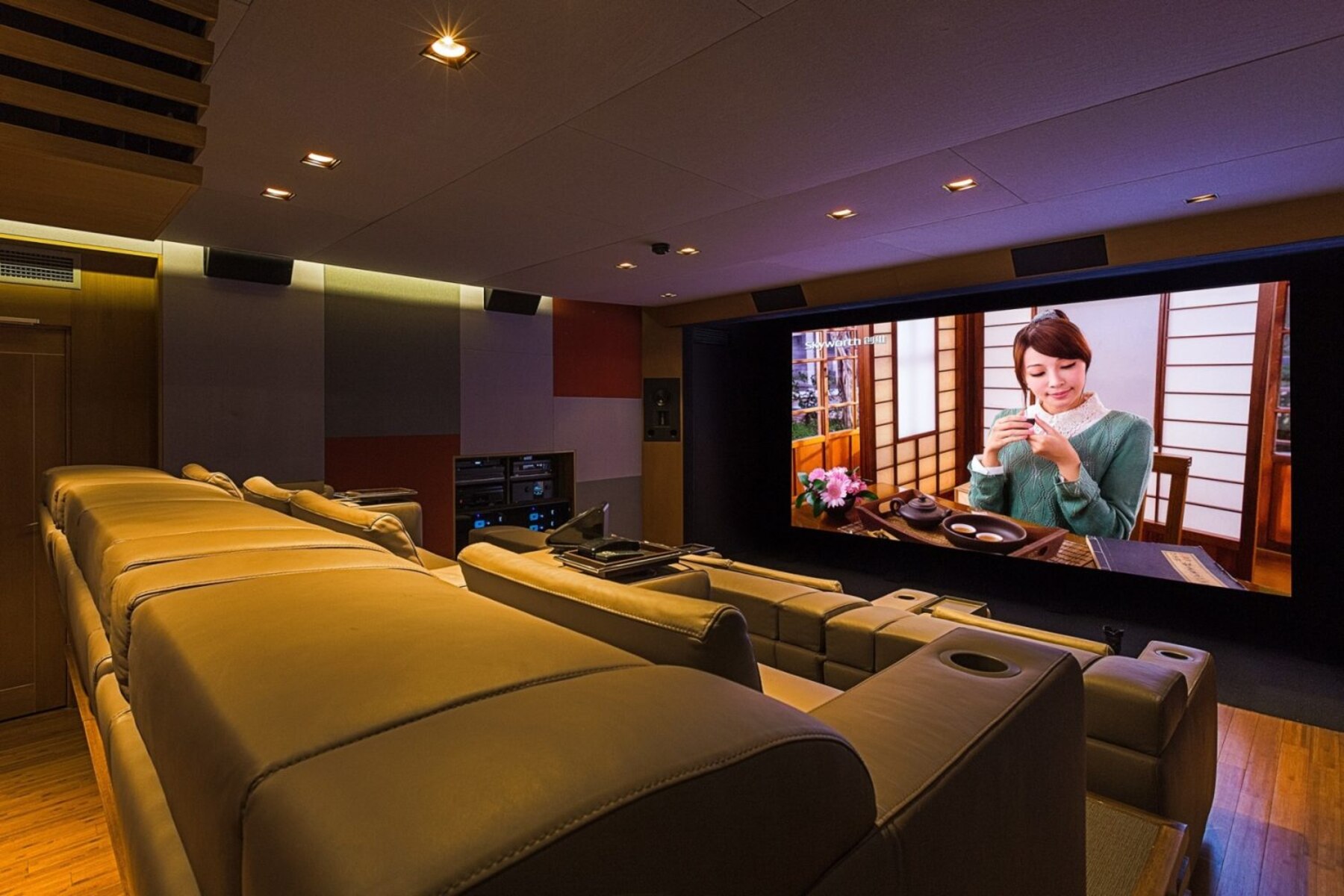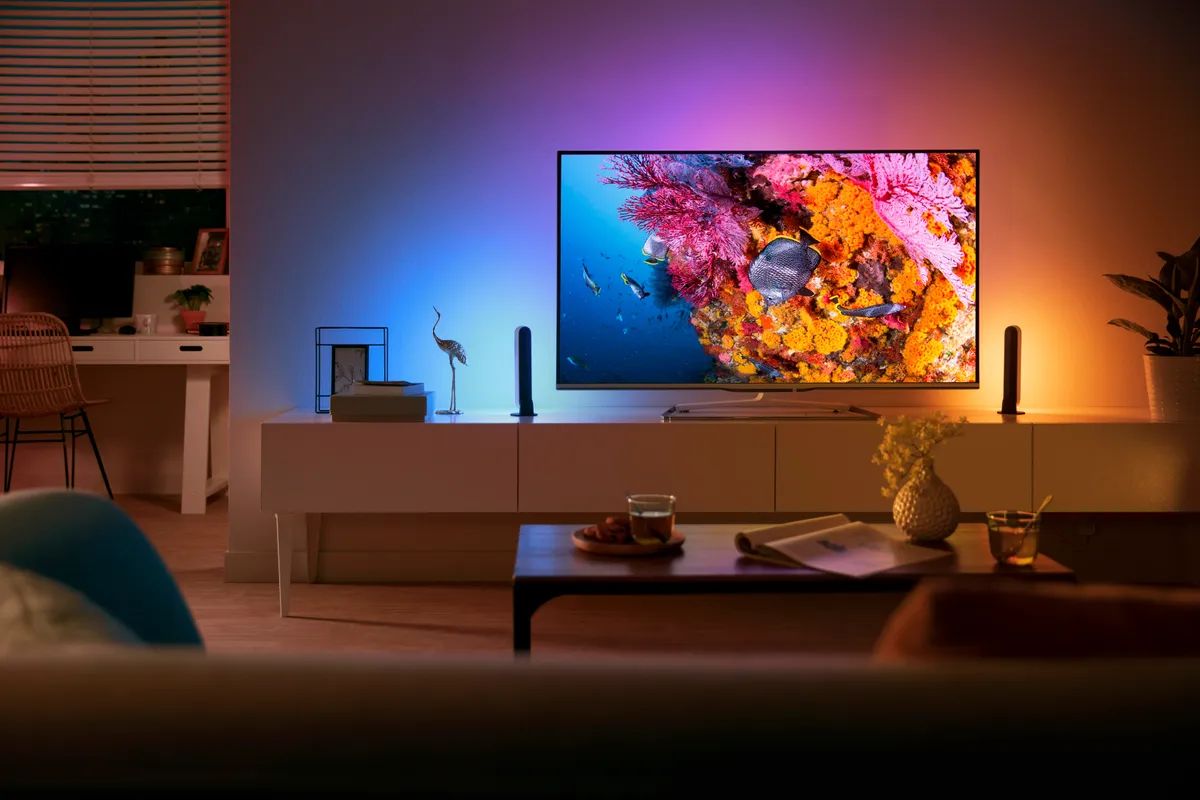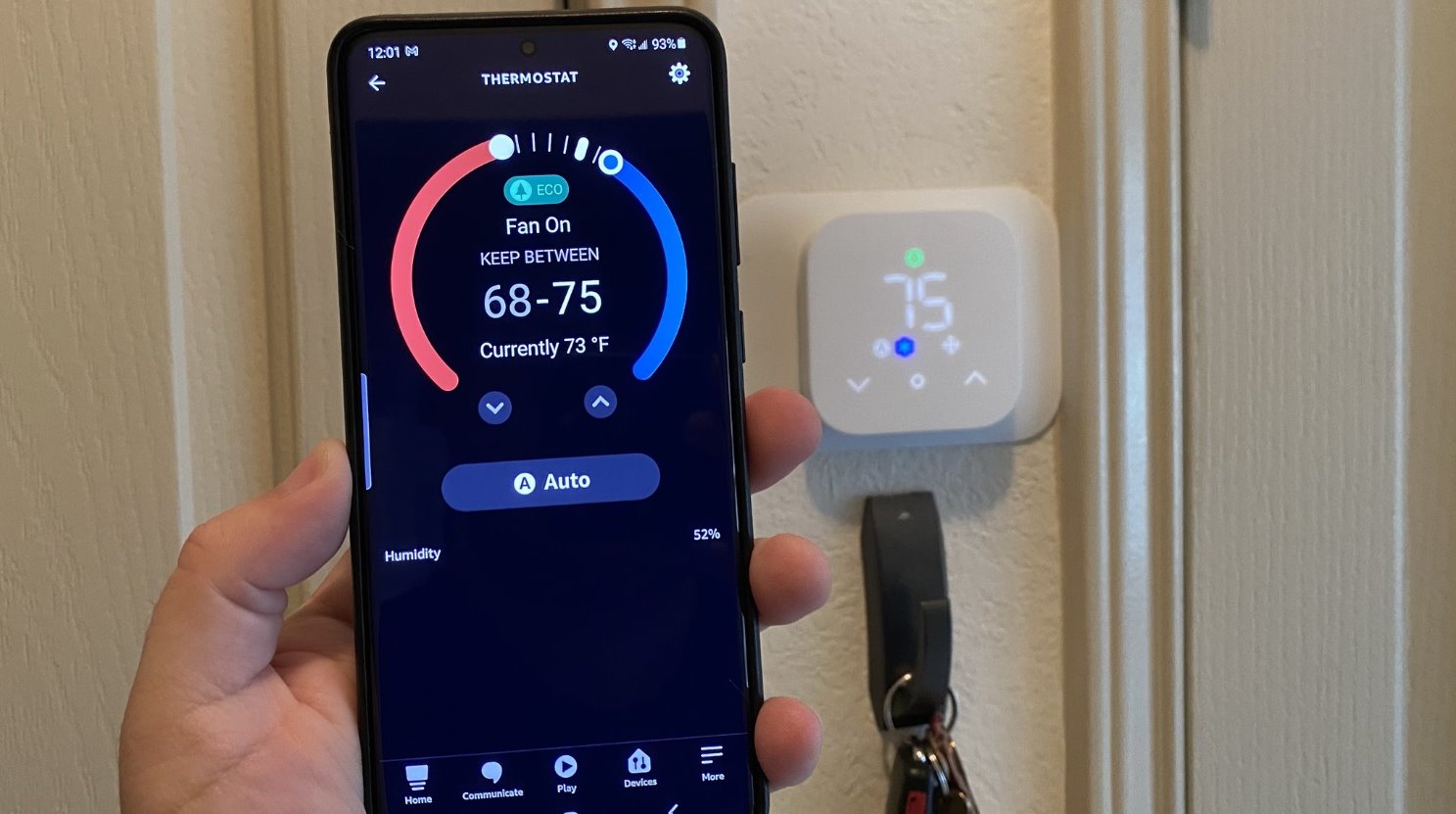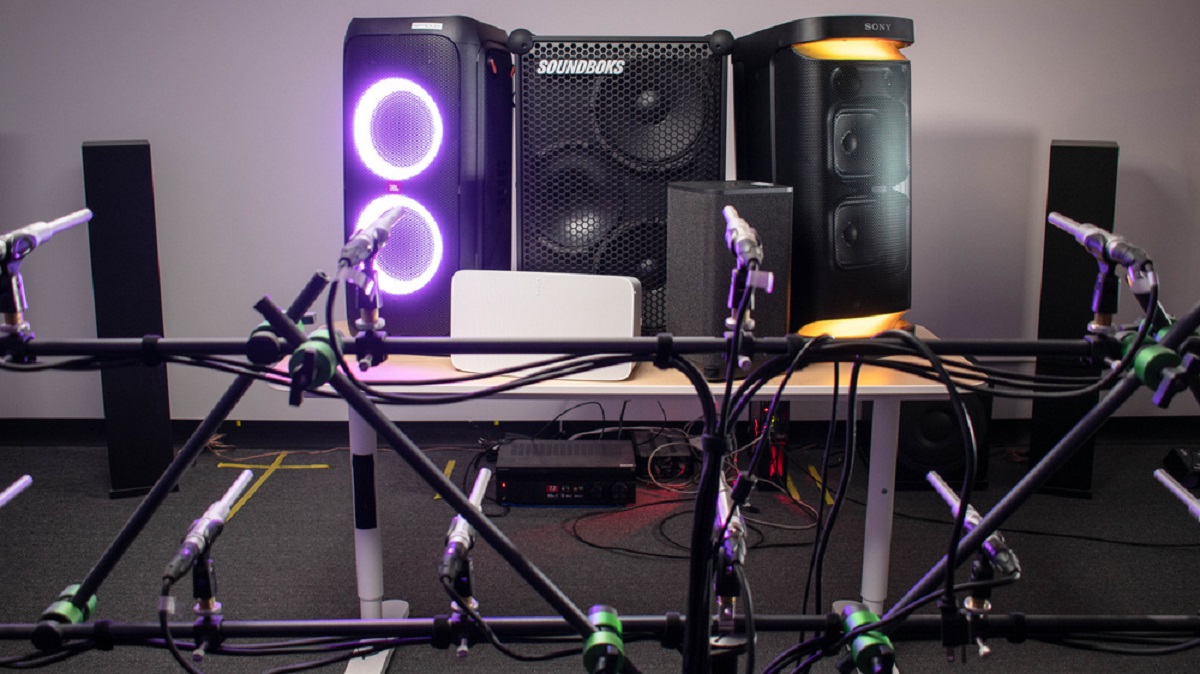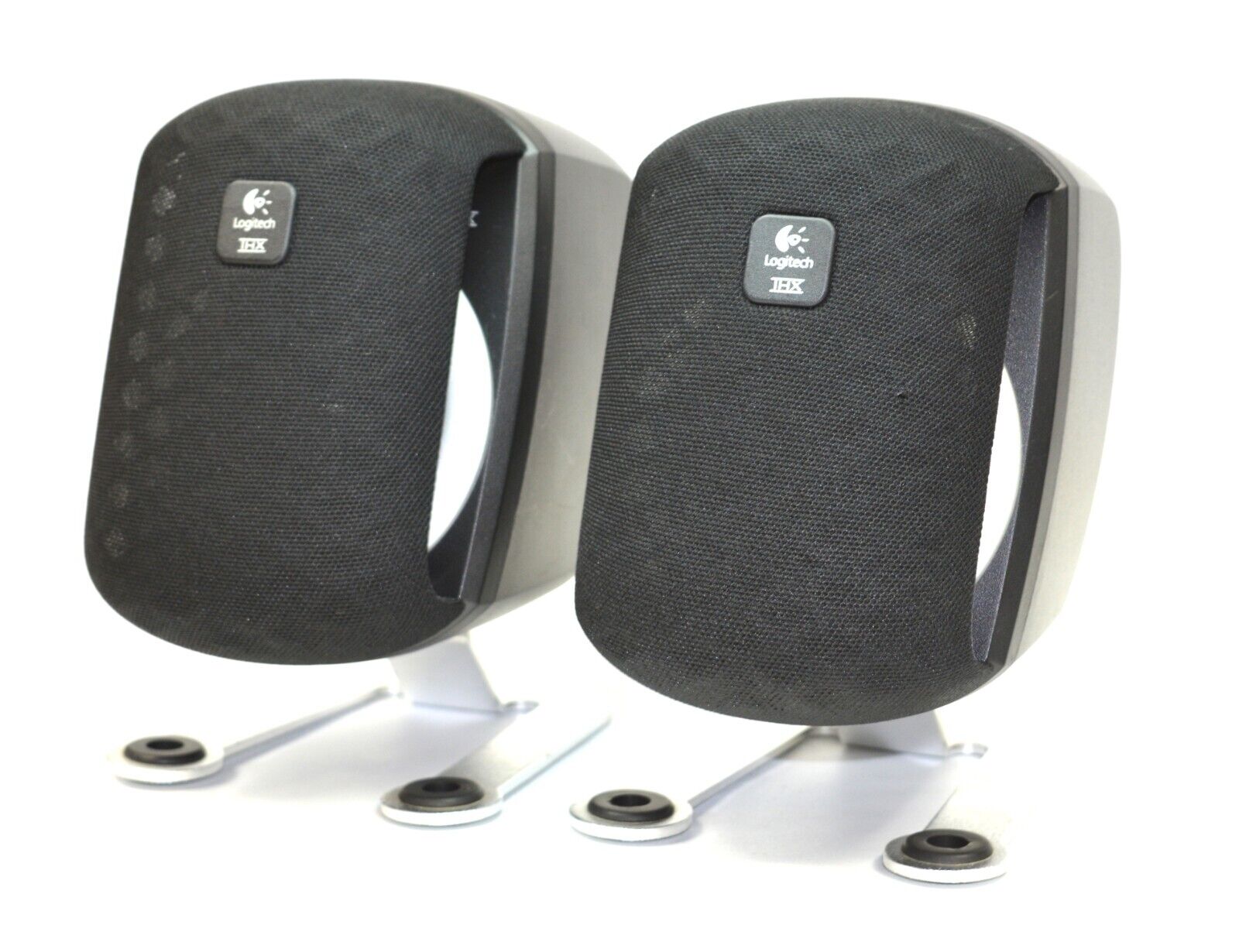Introduction
Welcome to the world of immersive audio with a 13.1 surround sound system! Whether you are a movie enthusiast, a music lover, or a gaming fanatic, a high-quality surround sound setup can transform your entertainment experience to a whole new level. With 13 speakers strategically placed around your room, you can enjoy unparalleled audio precision and immerse yourself in the rich and dynamic soundstage.
In this guide, we will walk you through the process of wiring a 13.1 surround sound system, step by step. From choosing the right speaker placement to connecting the speakers to an AV receiver, we’ll cover all the essentials you need to know to set up your own home theater system.
Before we dive into the technicalities, it’s important to mention that the success of your surround sound system installation depends on careful planning, precise wiring, and attention to detail. It may seem daunting at first, but with the right guidance and the proper tools, you’ll be enjoying thrilling sound effects and crystal-clear dialogue in no time.
Whether you have a dedicated home theater room or you’re looking to upgrade your living room setup, this guide will provide you with the knowledge and confidence to wire your own 13.1 surround sound system. So, let’s get started and turn your home into an immersive audio haven!
Choosing the Right Speaker Placement
When it comes to setting up a 13.1 surround sound system, speaker placement is crucial. Proper placement ensures optimal audio dispersion, creating an immersive sound experience that envelops you from all directions. Here are some important factors to consider:
1. Room Size and Layout: The size and shape of your room play a significant role in determining where to place your speakers. Larger rooms generally allow for more flexibility in speaker placement compared to smaller spaces. Take note of any architectural features or furniture that may impact sound reflection and absorption.
2. Listening Position: The primary listening position, where you sit or stand to enjoy your audio and video content, should be the focal point for placing your speakers. Ideally, the speakers should form a symmetrical layout around this position, ensuring balanced audio dispersion.
3. Front Speakers: The front speakers, consisting of the left, center, and right channels, are the backbone of your surround sound system. The center channel should be positioned directly above or below your display, while the left and right speakers should be placed at ear level, slightly angled towards the listening position.
4. Surround and Side Speakers: The surround and side speakers are responsible for creating the immersive surround effect. For a 13.1 system, there will be multiple surround speakers placed at different points around the listening area. These speakers should be positioned slightly above ear level and angled inward towards the primary listening position.
5. Overhead Speakers: In a 13.1 system, overhead speakers are crucial for creating a three-dimensional sound experience. These speakers are typically used for object-based audio formats like Dolby Atmos or DTS:X. They should be mounted directly above the primary listening position or as close to it as possible.
6. Subwoofers: Subwoofers are responsible for delivering deep and powerful low-frequency sounds. They are usually placed near the front speakers, but experimentation may be necessary to find the optimal position based on your room’s acoustics and personal preference.
Keep in mind that speaker placement may require some experimentation and adjustment based on your specific room and audio preferences. Take the time to fine-tune the positioning and angles of each speaker to achieve the best possible audio performance.
In the next section, we’ll explore the tools and materials you’ll need to wire your 13.1 surround sound system, so you can bring your home theater to life!
Gathering the Necessary Tools and Materials
Before you begin wiring your 13.1 surround sound system, it’s essential to gather all the necessary tools and materials to ensure a smooth installation process. Here are the items you’ll need:
1. Speaker Wire: Invest in high-quality speaker wire with the appropriate gauge for your system. The length of the wire will depend on the distance between your speakers and the AV receiver. Ensure you have enough wire to reach each speaker location.
2. Wire Cutters and Strippers: These tools will come in handy for cutting the speaker wire to length and stripping the insulation off the ends, enabling you to make proper connections.
3. AV Receiver: Your AV receiver serves as the central hub for connecting and powering your speakers. Choose a receiver that supports 13.1 channel audio and has the necessary speaker terminals and inputs for your system.
4. Speakers: Of course, you’ll need the appropriate number of speakers for a 13.1 surround sound setup. This will typically include front speakers (left, center, and right channels), surround speakers, side speakers, overhead speakers, and subwoofers.
5. Mounting Hardware: Depending on your speaker placement, you may need brackets, wall mounts, or stands to securely install your speakers in the desired positions.
6. Labeling Materials: To keep track of your speaker wire connections, it’s helpful to label each cable with its corresponding speaker location. This will save you time and confusion during the installation process.
7. Level and Tape Measure: Use a level to ensure that your speakers are properly aligned and a tape measure to accurately measure distances between speakers and furniture.
8. Cable Management Solutions: To keep your wires organized and minimize tripping hazards, consider using cable management solutions like cable clips, raceways, or conduits.
9. Power Tools (if necessary): If you’re mounting speakers or making modifications to your room, you may need tools such as a drill, screws, and a stud finder.
By gathering these tools and materials in advance, you’ll be well-prepared to tackle the installation process of your 13.1 surround sound system. In the next section, we’ll discuss how to prepare your room for the installation to ensure optimal audio performance.
Preparing the Room for Installation
Before you start wiring your 13.1 surround sound system, it’s important to prepare the room to optimize audio performance and ensure a clean and organized installation. Here are some steps to follow:
1. Clearing the Space: Remove any furniture, decorations, or obstacles in the area where the speakers will be placed. This will provide an unobstructed path for the speaker wires and allow for optimal sound dispersion.
2. Acoustic Treatment: Consider implementing acoustic treatments to improve the sound quality in the room. This can include adding sound-absorbing panels, diffusers, or bass traps to minimize reflections and enhance the overall audio experience.
3. Checking Electrical Outlets: Ensure that there are enough electrical outlets near the speaker locations to power the speakers and the AV receiver. If necessary, consult an electrician to install additional outlets.
4. Managing Room Lighting: Evaluate the lighting in the room and its impact on the viewing experience. Consider using blackout curtains or blinds to minimize external light sources that can cause glare on the screen and affect the immersive atmosphere.
5. Concealing Wires: Determine the best method for concealing the speaker wires. This can include running them through walls, using cable channels, or utilizing decorative wire covers. Concealing wires not only enhances the overall aesthetics, but also reduces the risk of tripping hazards.
6. Optimizing Speaker Placement: Based on the room dimensions and furniture layout, make any necessary adjustments to the speaker placement. Ensure that the speakers are positioned at the right height, angle, and distance from the primary listening area to maximize audio performance.
7. Calibrating the Room: Consider using audio calibration tools or consulting a professional to properly calibrate your surround sound system. This involves measuring the room’s acoustics and optimizing the audio settings on your AV receiver for the best possible sound reproduction.
8. Considering Room Eqυalization: If your AV receiver supports room EQυalization, take advantage of this feature to automatically adjust the audio output to compensate for room acoustics and speaker placement.
By taking the time to prepare the room adequately, you’ll ensure that your 13.1 surround sound system delivers optimal audio performance and enhances your overall viewing or gaming experience. In the next section, we’ll delve into the different types of speaker connections you’ll encounter during the wiring process.
Understanding the Speaker Connection Types
Before you wire your 13.1 surround sound system, it’s important to have a good understanding of the different types of speaker connections. The type of connection will depend on your speakers and AV receiver. Here are the common speaker connection types:
1. Bare Wire: Bare wire connections involve directly inserting the exposed ends of the speaker wire into the terminals on the back of the speakers and AV receiver. This method requires stripping the insulation off the wire and twisting the exposed strands to create a secure connection.
2. Banana Plugs: Banana plugs are commonly used for speaker connections. These plugs have a cylindrical shape with a pin on the end that inserts into the corresponding terminal on the speaker or receiver. Banana plugs offer a more convenient and secure connection, especially if you frequently move or reposition your speakers.
3. Spade Connectors: Spade connectors feature a flat, fork-shaped end that can be inserted into the speaker or receiver terminals and secured with screws or binding posts. Spade connectors provide a reliable and solid connection, particularly for heavier gauge speaker wires.
4. Pin Connectors: Pin connectors, also known as spring clips or push terminals, have a spring-loaded design that allows you to insert the bare ends of the speaker wire directly into the terminals. The spring tension ensures a firm connection and easy installation without any additional tools.
5. Binding Posts: Binding posts offer a versatile connection option. They typically consist of a plastic or metal post with a screw-type mechanism. By unscrewing the post, you can insert the bare wire and then tighten the post to secure the connection. Binding posts accommodate a variety of connection types, including bare wire, banana plugs, spade connectors, or pin connectors.
When connecting your speakers to the AV receiver, ensure that you follow the manufacturer’s instructions and connect each speaker to the appropriate channel. Properly connecting the speakers will ensure accurate sound reproduction and prevent any phase or impedance issues.
In the next section, we’ll discuss the process of mapping out the speaker placement in your room, which is crucial for achieving optimal audio performance.
Mapping Out the Speaker Placement
Mapping out the speaker placement is a crucial step in setting up your 13.1 surround sound system. Proper placement ensures that sound is accurately distributed throughout the room, creating a captivating audio experience. Here are some guidelines to consider when mapping out the speaker placement:
1. Speaker Layout Diagrams: Start by referring to the user manuals or documentation provided with your speakers and AV receiver. These resources usually include diagrams illustrating the recommended speaker placements for optimal performance. Use these diagrams as a starting point for your setup.
2. Room Dimensions and Furniture: Take note of the dimensions of your room and the placement of furniture, as these factors can affect speaker placement. Ensure that the speakers have enough space to be properly positioned and angled towards the listening area.
3. Primary Listening Position: Identify the primary listening position, where you’ll be sitting or standing to enjoy your audio. This position should be the focal point for speaker placement. Aim to create a symmetrical layout around this position to ensure balanced sound distribution.
4. Front Speaker Placement: Position the front speakers (left, center, and right channels) in line with the primary listening position. The center channel speaker should be placed either above or below the display, while the left and right speakers should be slightly angled towards the center.
5. Surround and Side Speaker Placement: For the surround and side speakers, position them slightly above ear level and angled towards the primary listening area. These speakers should create an enveloping surround sound experience, immersing you in the audio from all sides.
6. Overhead Speaker Placement: If your system includes overhead speakers for immersive audio formats like Dolby Atmos or DTS:X, place them directly above the primary listening position or as close to it as possible. These speakers play a crucial role in creating a three-dimensional sound experience.
7. Subwoofer Placement: Subwoofers typically deliver deep bass frequencies and can be placed anywhere in the room. Experiment with different locations to find the spot that provides the best bass response. Common placements include near the front speakers or in a corner of the room.
8. Speaker Angles: To optimize sound projection, angle the speakers slightly towards the primary listening position. This helps to direct the sound towards your ears and enhances the overall listening experience.
Remember that speaker placement is not an exact science and may require some trial and error to achieve the desired audio performance. Take the time to experiment with different configurations and listen to test tracks or content that showcases surround sound capabilities to find the best placement for your speakers.
In the next section, we’ll dive into the process of running the speaker wire to connect your speakers to the AV receiver.
Running the Speaker Wire
Running the speaker wire is a critical step in wiring your 13.1 surround sound system. Properly routed and secured speaker wire ensures optimal signal transmission and minimizes interference. Here’s a step-by-step guide on how to run the speaker wire:
1. Measure the Distance: Measure the distance from each speaker location to your AV receiver. Add some extra length to account for any necessary slack or potential future adjustments.
2. Choose the Right Speaker Wire: Select speaker wire with an appropriate gauge for your specific setup. Thicker wire (lower gauge number) is recommended for longer distances or higher-powered speakers to minimize signal loss.
3. Prepare the Wire: Use wire cutters and strippers to remove approximately half an inch of insulation from each end of the speaker wire. This exposes the bare wire needed for the connection.
4. Route the Wire: Start by running the speaker wire from the AV receiver to each speaker location. You can run the wire along the baseboards, under the carpet or rugs, or through wall conduits if necessary. Ensure the wire is not stretched tightly and has some slack to avoid strain on the connections.
5. Concealing the Wire: If you prefer a cleaner look, consider concealing the speaker wire. You can use cable channels, raceways, or even run it through the wall (if allowed and safe) to hide the wires for a more streamlined appearance.
6. Keeping Wire Separated: To prevent interference, try to keep the speaker wire separated from other electrical cables or power sources. Cross them at right angles when necessary to minimize potential interference issues.
7. Secure the Wire: Use cable clips or adhesive clips to secure the wire along its route. This prevents it from hanging loosely or becoming a tripping hazard. Be mindful of corners and doorways where the wire may bend or get caught.
8. Label the Connections: To avoid confusion during installation and maintenance, label the ends of the speaker wire or use colored tape to identify each wire’s corresponding speaker location.
9. Connect the Wires: At each speaker location, connect the positive (red) wire to the positive terminal and the negative (black) wire to the negative terminal. Follow the instructions provided with your speakers for the specific connection type you’re using.
By following these steps, you’ll be able to run the speaker wire effectively, ensuring a clean installation and optimal audio performance for your 13.1 surround sound system. In the next section, we’ll discuss how to connect the speakers to the AV receiver.
Connecting the Speakers to the AV Receiver
Connecting the speakers to the AV receiver is the final step in wiring your 13.1 surround sound system. The proper connection ensures that audio signals are transmitted accurately and that each speaker functions as intended. Follow these steps to connect your speakers to the AV receiver:
1. Locate the Speaker Terminals: On the back of your AV receiver, locate the speaker terminals. These are usually labeled with corresponding channel names, such as “Front Left,” “Center,” “Surround Left,” etc. Make sure the receiver is powered off before proceeding.
2. Identify the Speaker Channels: Identify which speaker wire corresponds to each speaker channel. If you labeled your speaker wires during the wiring process, this step should be straightforward.
3. Prepare the Speaker Wire: Strip the insulation off the speaker wire at the ends, exposing the bare wire. Twist the exposed strands to ensure a secure and clean connection.
4. Make the Connections: Insert the bare wire or connect the appropriate connector (e.g., banana plug, spade connector) into the corresponding speaker terminal on the AV receiver for each channel. Ensure a tight and secure connection, avoiding any loose wires that may cause signal interruptions.
5. Observe Polarity: Pay attention to the polarity of the speaker connections. Connect the positive wire (usually designated by a red marker or label) to the positive terminal and the negative wire (usually black) to the negative terminal. Maintaining proper polarity ensures the speakers are in phase, producing accurate sound reproduction.
6. Repeat the Process: Repeat Steps 3 to 5 for each speaker in your setup, connecting them to their respective channels on the AV receiver. Double-check the connections to ensure accuracy.
7. Double-Check Connections: Once all the speakers are connected, do a final check to ensure all connections are secure and properly seated. Avoid any loose or strained wires that may affect the audio performance.
8. Power On the AV Receiver: Once all the connections are in place and verified, power on your AV receiver and go into the audio settings to configure the speaker setup. Follow the instructions in your receiver’s user manual to select the appropriate speaker channels and settings for your 13.1 surround sound system.
By following these steps, you’ll successfully connect your speakers to the AV receiver, completing the wiring process for your 13.1 surround sound system. In the next section, we’ll discuss the importance of testing and troubleshooting your system to ensure everything is functioning correctly.
Testing and Troubleshooting the System
After connecting the speakers to the AV receiver, it’s essential to test and troubleshoot your 13.1 surround sound system. This step ensures that all components are functioning correctly and that you’ll get the best audio experience. Follow these guidelines for testing and troubleshooting:
1. Test Each Speaker: Configure your AV receiver to play test tones or surround sound content that allows you to individually test each speaker. Pay close attention to ensure that sound is coming from the correct speaker and that all speakers are producing sound. Adjust the audio settings to balance the volume levels if necessary.
2. Check Channel Balance: Verify the balance between the left and right channels as well as the surround and overhead speakers. Make sure that the sound is evenly distributed and that no speaker is overpowering or underperforming compared to the others.
3. Verify Input Sources: Test different input sources (e.g., Blu-ray player, gaming console, TV) to ensure that the audio is being correctly processed and distributed to the speakers. Check that the AV receiver is set to the appropriate input source and that the audio is playing through all the speakers as expected.
4. Inspect Wire Connections: Physically inspect all the wire connections at both the AV receiver and the speakers. Ensure that all connections are secure and properly seated in the terminals. Loose connections can result in audio dropouts or loss of sound from specific speakers.
5. Troubleshoot Audio Issues: If you encounter any audio issues, such as distorted sound, inconsistent volume, or missing channels, first check the settings on your AV receiver. Verify that the correct speaker configuration is selected and that any sound processing modes are appropriately activated or disabled. Also, consider checking your audio sources for any compatibility issues.
6. Check Speaker Phasing: Confirm that all speakers are in phase and producing coherent sound. If you notice any phase cancellation effects or a lack of clarity, double-check the polarity of each speaker connection. Reversing the polarity of a speaker can help resolve phase-related issues.
7. Consider Room Acoustics: Take into account the impact of your room’s acoustics on the audio quality. Address any reverberation, echoes, or reflections that may be affecting the sound. Adding acoustic treatments like rugs, curtains, or sound-absorbing panels can help improve the overall listening experience.
8. Consult the User Manual or Technical Support: If you encounter persistent issues or require further assistance, consult the user manual for your AV receiver or contact the manufacturer’s technical support team for guidance.
By thoroughly testing and troubleshooting your 13.1 surround sound system, you can address any issues and ensure that everything is functioning optimally. In the next section, we’ll discuss the important step of fine-tuning the sound levels to achieve the best audio balance.
Fine-tuning the Sound Levels
Once you have set up and tested your 13.1 surround sound system, it’s time to fine-tune the sound levels. Adjusting the audio balance ensures that all speakers work together harmoniously to deliver an immersive and well-balanced sound experience. Here are some tips for fine-tuning the sound levels:
1. Use a Sound Level Meter: Consider using a sound level meter to measure the volume levels of each speaker. This tool helps ensure that all speakers produce sound at the same perceived volume, creating a balanced soundstage. Adjust the speaker volume levels within the AV receiver’s settings to achieve consistent output.
2. Adjust Channel Delays: Some AV receivers allow you to adjust the speaker channel delays. Use this feature if needed to synchronize the sound from various speakers, particularly when speakers are positioned at different distances from the listening area. Adjusting the channel delays ensures that the sound arrives at the listener’s ears simultaneously.
3. Consider Room EQυalization: If your AV receiver offers room EQυalization (EQ) functionality, take advantage of it. This feature automatically analyzes and adjusts the audio output based on the characteristics of your room. Run the room EQυalization setup to optimize the audio performance and correct any frequency response irregularities caused by the room’s acoustics.
4. Pay Attention to Bass Levels: Fine-tuning the bass levels is important for achieving a well-balanced sound. Adjust the subwoofer settings, either on the AV receiver or the subwoofer itself, to find the right amount of low-frequency reinforcement without overwhelming other speakers or causing distortion.
5. Experiment with Audio Modes: Explore the various sound modes or virtual surround options offered by your AV receiver. These modes can enhance the audio experience based on the content being played. Experiment with different modes to determine which provides the desired soundstage and immersion for movies, music, or gaming.
6. Make Small Adjustments: Fine-tuning is a process of small adjustments. Incrementally adjust the volume levels, delays, EQ settings, and other audio parameters to achieve the desired audio balance. Listen to different types of content and genres to ensure that the adjustments work well across a range of material.
7. Consider Personal Preferences: Ultimately, fine-tuning the sound levels should reflect your personal preferences. Experiment with the settings to create a sound that suits your listening preferences, whether you prefer a more immersive experience, a balanced soundstage, or any other specific audio characteristics.
8. Regularly Reassess: As time goes on, or after making any changes to your setup or room arrangement, it’s important to reassess and revisit the sound levels. Room dynamics, furniture placement, or new equipment may require you to make adjustments to maintain optimal audio performance.
By paying attention to the details and fine-tuning the sound levels, you can ensure that your 13.1 surround sound system delivers an immersive and balanced audio experience. In the final section, we’ll recap the key points covered in this guide to help you successfully wire your surround sound system.
Conclusion
Congratulations on successfully wiring your 13.1 surround sound system! By following the steps outlined in this guide, you have now set up a powerful and immersive audio system that will enhance your entertainment experience. Let’s recap the key points covered:
We started by discussing the importance of choosing the right speaker placement to optimize audio dispersion and create an enveloping soundstage. Taking into account the room size, layout, and the specific requirements of each speaker, you can ensure an optimal listening experience.
Next, we emphasized the significance of gathering the necessary tools and materials. From speaker wire and wire cutters to the AV receiver and speakers themselves, having the right equipment is crucial for a smooth installation process.
We then covered the importance of preparing the room for installation. Clearing the space, managing room lighting, and considering acoustic treatments are vital steps to ensure optimal audio performance in your environment.
Understanding the different speaker connection types helped you make the right choices when connecting your speakers to the AV receiver. Whether utilizing bare wire, banana plugs, spade connectors, pin connectors, or binding posts, a secure and proper connection ensures accurate signal transmission.
We discussed the process of mapping out the speaker placement in your room. By considering dimensions, furniture layout, and the primary listening position, you can create an ideal configuration for a captivating surround sound experience.
Running the speaker wire was the next step, where we outlined the process of measuring, choosing the right wire, routing the wires, and securing them properly. This ensures optimal signal transmission and prevents interference.
Connecting the speakers to the AV receiver finalized the wiring process. By carefully connecting each speaker to the appropriate channel, you ensured accurate sound reproduction and proper functionality of your system.
Testing and troubleshooting the system allowed you to ensure that all components are working correctly. By using test tones, verifying connections, and addressing any issues, you guaranteed optimal audio performance.
Fine-tuning the sound levels allowed you to achieve a balanced and immersive audio experience. By adjusting volume levels, considering room EQυalization, and paying attention to bass levels, you optimized the sound output to your personal preferences.
Remember to regularly reassess and make adjustments as needed to maintain optimal audio performance and account for any changes to your setup or room environment.
With your 13.1 surround sound system successfully wired and fine-tuned, you can now enjoy a truly immersive home theater experience. Sit back, relax, and let the rich and dynamic audio envelop you as you dive into your favorite movies, music, and games. Happy listening!







